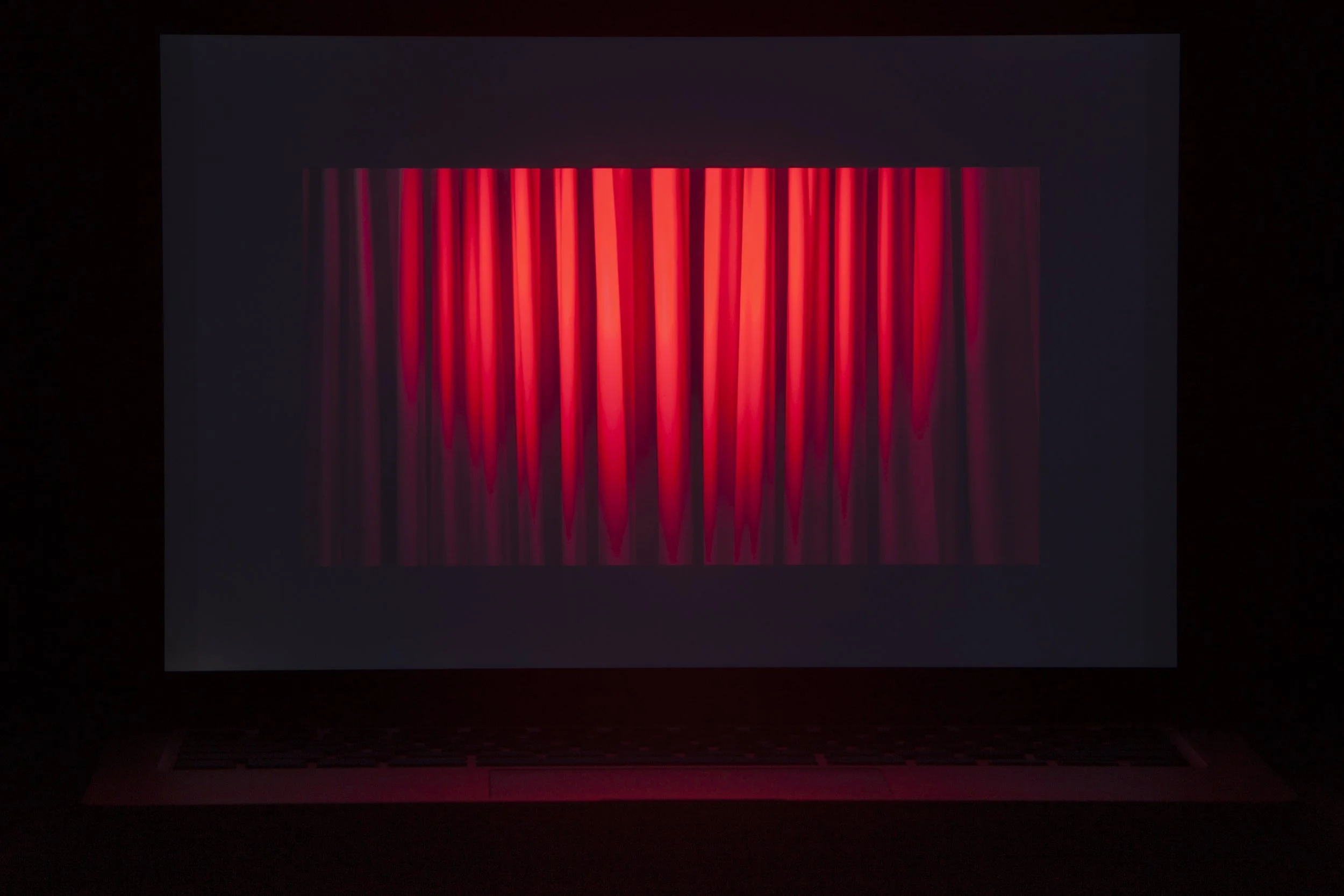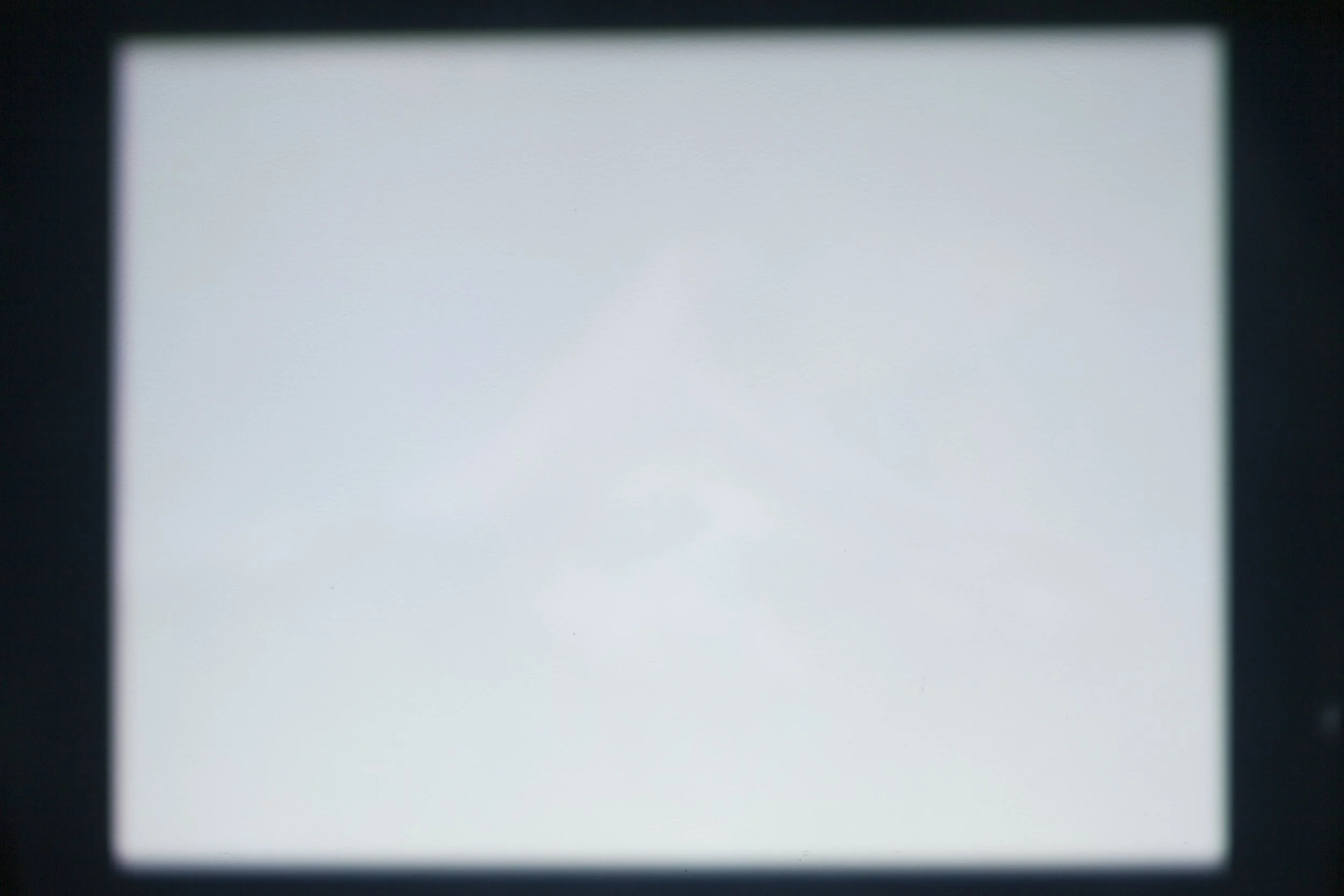THE APPEAL OF LOOKING
Neuropsychologist Oliver Sacks states that the ability of human image reorganization is learned by practice. He uses an example to confirm this theory that people who have been blind for a long period of time will need to learn how to recognize the objects that they are seeing even when the physical structure of their eye has been fully repaired. Without noticing it, we are trained to look at images and interpret them rapidly and efficiently everyday. This is very similar to the process of language translation, except that the visual information is harder to translate in a standard way. That is the reason why visual information is commonly used by advertising, political parties and news media to influence our thinking and our emotions, while we remain unaware.
IT IS NOT THEATER
It is not Theater is a shot of a computer screen showing a red curtain image, which was cropped in the format a movie theater screen. The way we see things is affected by what we know or what we believe. If you believe it’s a Theater, what you saw could be 70 feet by 40 feet. If you believe it is on a computer screen, it is only 13inchs by 9inches. Sometimes it is hard to believe what we see, because when you are trying to read and view things quickly, your brain will be led by the information that you are used to and even addicted to. That’s why the media can manipulate our minds today, and that’s also why people will always see the mountain in It is not Empty after they have seen it once. Emily Balcetis, social psychologist who is also interested in social reception, talks about the limits of visual focus in a given time
“….the amount of information that we can see at any given point in time, what we can focus on, is actually relatively small. What we can see with great sharpness and clarity and accuracy is the equivalent of the surface area of our thumb on our outstretched arm. Everything else around that is blurry, rendering much of what is presented to our eyes as ambiguous. But we have to clarify and make sense of what it is that we see, and it's our mind that helps us fill in that gap. As a result, perception is a subjective experience, and that's how we end up seeing through our own mind's eye.” (Why some people find exercise harder than others)
Many human activities now are limited in this platform. It also limits our visual perception for a real sense of the world. Marshall McLuhan is a pioneer in media theory study. His theory is well recognized as one of the footstones of media theory. In 1964, he wrote a book Understanding Media in which he suggested that people should consider media as not only a carrier of content but also a message that affect the society. He said, “Media, by altering the environment, evoke in us unique ratios of sense perceptions. The extension of any one sense alters the way we think and act the way we perceive the world. When these ratios change, men change” (p.41).
IT IS NOT EMPTY
It is not Empty is the image that totally focuses on a textured blank white wall, where a one percent transparent blurry image of Majestic Mountain is projected. The image of Majestic Mountain is the well-known logo of the Paramount Pictures Corporation. Every time I watch a movie produced by Paramount Pictures, I see this mountain. Paramount Pictures has been using this logo since its inception, and it is the oldest surviving Hollywood film logo. Media can also plant an impression on people’s memory. Take the paramount mountain for example, my impression of the Majestic Mountain is this picture because I never went to this mountain, however I saw this picture thousands times.
This work is the most interesting one in the series because the details are very subtle. Many people thought that it was an empty screen. I get very excited when asking my audience, “Did you see the mountain?” I believe most people will recognize the mountain because most people have seen it many times. To make Majestic Mountain appear, all I need to do is to ask a simple question to allow my audience to look at it in a slightly deeper way. This experience is extremely important. We are constantly looking at the world around us, and quickly identify and make sense of what we see. The Internet is strengthening our ability to search and skim information rapidly, which renders us impatient when attempting to read visual information as deeply as we could before. Another interesting aspect of this work is that people will subsequently always see the mountain after they have seen it once.
IT IS NOT WOOD
It is not Wood is a computer screen which displays several images of wood texture and is partly covered by a piece of real wood. What I want to discuss here is nothing about wood itself. However, wood as serving as an example of visual information. The mouse cursor is functioning as an indicator to let my viewers differentiate the screen on the left side from the real wood on the right side. Apparently the left side is more easily seen as real wood than the right side. But the truth is the opposite. The visual information of any object can be easily duplicated by visual media technology today. The imaginary world created by the internet and digital media is far more appealing, compared to that of the boring and stressful reality we are living. I use the ambiguity of images of wood to symbolize the weak border between media social lives and normal social lives.
IT IS NOT TREE
It is not Tree is an image of a window blind in morning light. The light and shadows on the blind were from the actual tree standing outside of the window, while the green leaves and branches of the tree were projected from the inside of the window. In this work, I deliberately displayed the visual signals that our eyes receive from physical objects and the visual signals from media technologies at the same time. Our eyes tend to treat these two kinds of signals equally, but the image of the tree generated by media artificially seems to be a stronger stimulation to our brain than the physical window blind. Nikolaas Tinbergen, a Nobel Prize laureate in biology, coined the term “supernormal stimuli” to describe an artificial stimulus that results in a stronger response than a stimulus naturally existing. Social media could be classified as one kind of supernormal stimuli. There is much research suggesting that media has caused an increase in clinical depression in our current society. It is not only because the negative coverage tendency, but also because an idealized representation. Bessenoff (2006) conducted a study on female college undergraduates, and found that “exposure to thin-ideal advertisement increased body dissatisfaction, negative moods, and levels of depression and lowered self-esteem” (p.239) It is important to be aware that our brain can be attracted and trapped by many “supernormal” signals.



